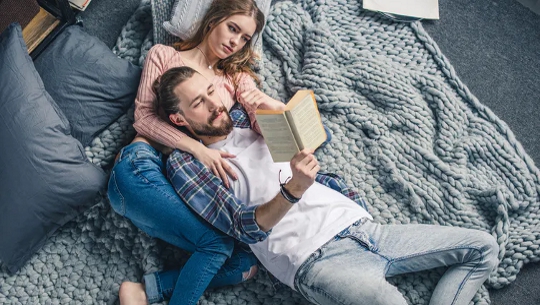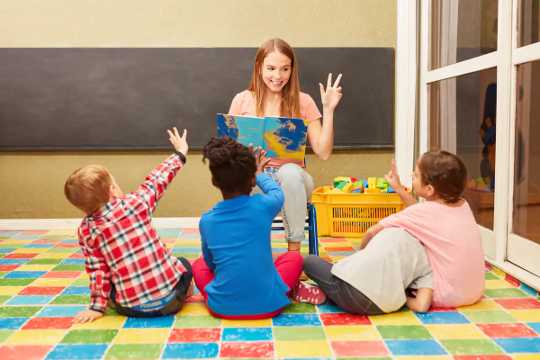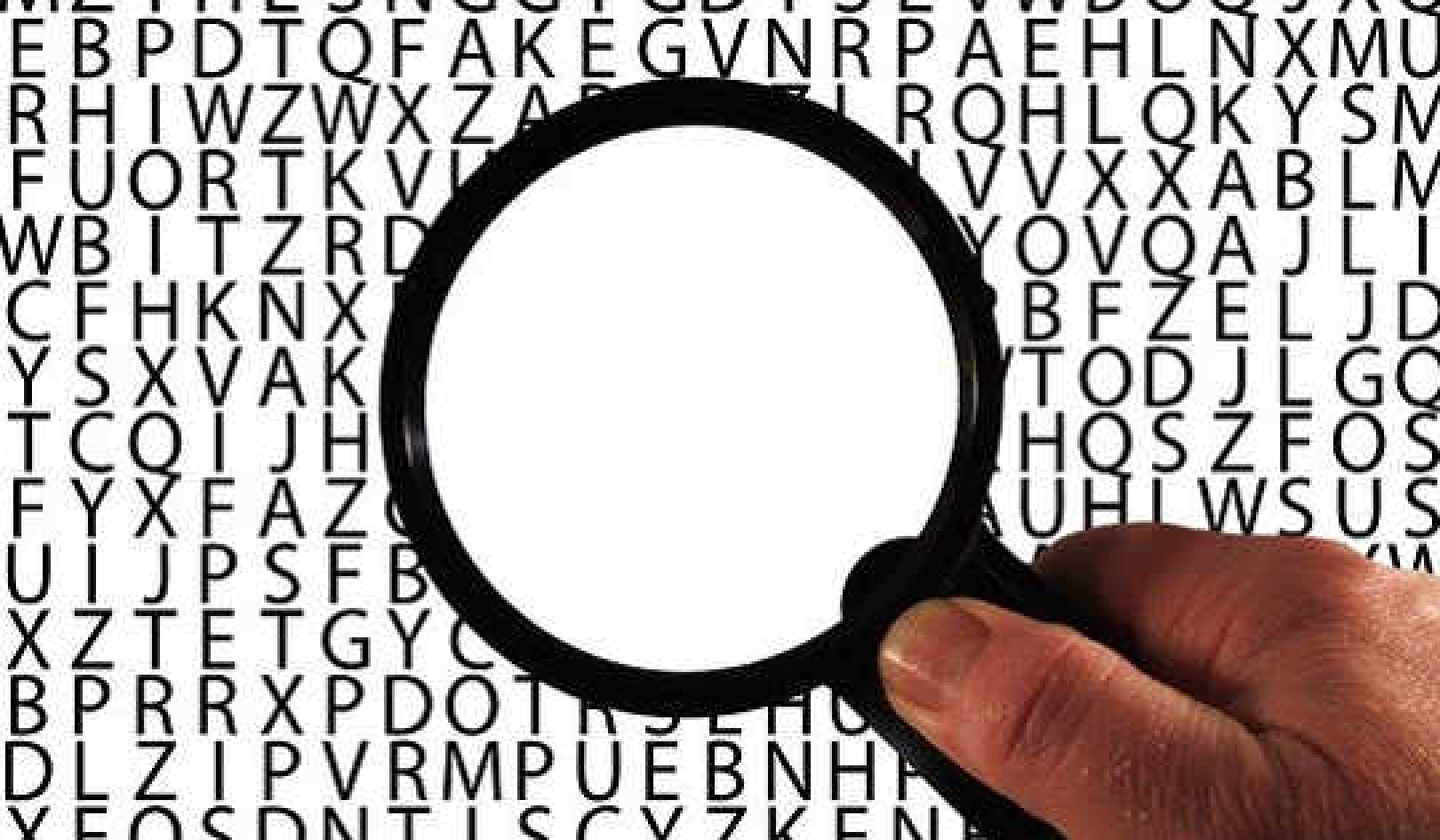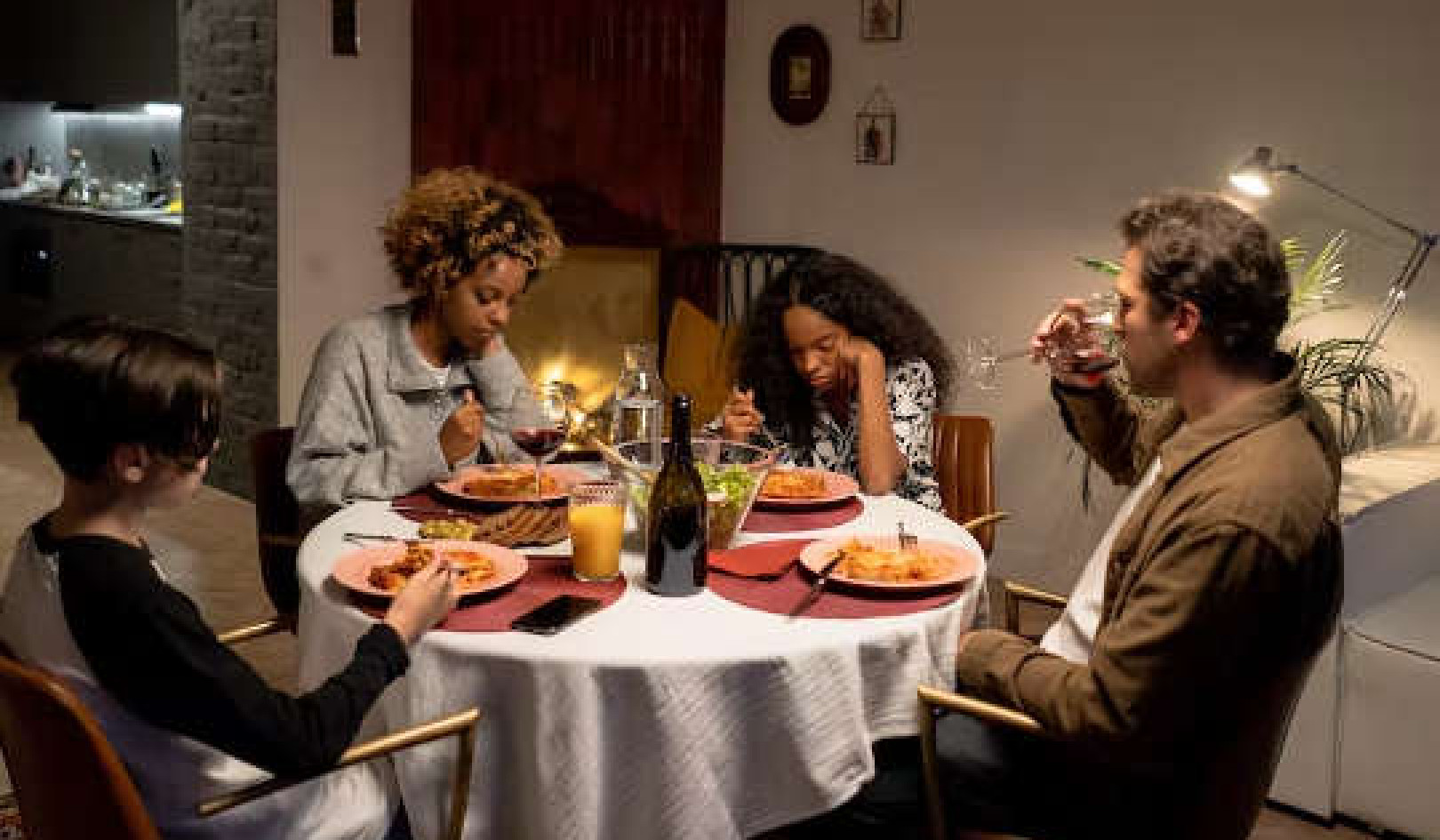
LightField Studios/Shutterstock
Reading aloud is an activity that we associate with the cosy comfort of children’s bedtime stories. Certainly, children’s classics from The Gruffalo to the Alice books are produced knowing that when they come to be read, the chances are that an older person will be reading them aloud to a younger one.
The extensive benefits of reading aloud to children are well documented. Researchers have found that toddlers who are read to become children who are “more likely to enjoy strong relationships, sharper focus, and greater emotional resilience and self-mastery”.
Unsurprisingly, then, the American Academy of Pediatrics recommends reading aloud to children. It’s even used by sociologists as one of the most important indicators of life prospects.
But if reading aloud is so good for us, why has it become primarily the preserve of childhood?
How silent reading took over
Of course it wasn’t always this way. As Meghan Cox Gurdon, the Wall Street Journal’s Children’s book critic, points out, since the advent of the written word until the 10th century, “to read at all was to read aloud”.
Even after silent reading became more common, it co-existed with what English Literature professor Abigail Williams refers to as “communal” and “social” forms of reading well into the 19th century. Only when the voices of mass media entered the home through radio and TV sets did reading as a shared public activity between consenting adults specifically start to wane.
 Children aren’t the only ones who benefit from being read to. Robert Kneschke/Shutterstock
Children aren’t the only ones who benefit from being read to. Robert Kneschke/Shutterstock
But as books themselves reveal, reading aloud could be more than merely sociable. It can be deeply seductive, forging intimate as well as communal bonds.
Azar Nafisi’s memoir about life as a woman and as a literature teacher in post-revolutionary Iran, Reading Lolita in Tehran (2003), features students Manna and Nima, who “had fallen in love in large part because of their common interest in literature”. If a love of literature draws this couple together, it’s reading it aloud that cements their relationship. The words they read aloud conjure a safe space from the difficulties of their word.
Likewise, in Mansfield Park (1814), Jane Austen uses reading aloud as a highly charged turning point in the relationship between protagonist Fanny Price and her recently declared suitor, Henry Crawford. When Henry reads aloud to the gathered assembly, his skill and sensitivity is such that Fanny is forced to sit up and listen despite herself.
Her needlework, upon which she determinedly focuses all her attention at first, eventually drops into her lap “and at last … the eyes which had appeared so studiously to avoid him throughout the day were turned and fixed on Crawford, fixed on him for minutes, fixed on him in short till the attraction drew Crawford’s upon her, and the book was closed, and the charm was broken.”
This insistent repetition makes for fairly steamy stuff in the Regency drawing room.
Reading as seduction
Elsewhere, reading aloud goes beyond such (ultimately unsuccessful) wooing. Spoiler alert: Crawford scuppers his chance with Fanny and runs away with her (already married) cousin (gasp!).
In Bernhard Schlink’s The Reader (1997), reading aloud underpins the relationship between the narrator, Michael, and his much older lover, Hanna – played in the 2008 film adaptation by David Kross/Ralph Fiennes and Kate Winslet.
Whether to keep Michael on track, or out of pure self-interest, Hanna insists that Michael read to her before they make love. Only much later do Michael and the reader discover that Hanna has two secrets (spoiler alert): she is a former concentration camp guard and she is illiterate.
Here, reading aloud is not just the warm-up act but an integral part of an intimate “ritual of reading, showering, making love and lying beside each other”. Reading unites these two very different individuals both physically and emotionally. Much later, when Hanna is imprisoned for war crimes, Michael continues to read to her from a distance; the taped recordings he sends ultimately allowing her to learn to read herself.
The unhappy fates of some of these relationships show that reading aloud is not a one-way ticket to the happily ever after. But these scenes do reveal its deep sensuality. According to Gurdon, the Wall Street Journal’s Children’s book critic, “there is incredible power in this fugitive exchange”.
Gurdon also suggests that reading aloud “has an amazing capacity to draw us closer to one another” both figuratively and literally. Where solitary reading drives us into ourselves – producing the cliched image of the couple reading their own books in bed before rolling over and turning out the light - reading aloud is a shared experience.
Reading aloud takes longer, but that is part of the point. Slow reading is sensuous reading. As opposed to the audiobooks now so firmly a part of the cultural landscape, for adults as well as children, reading aloud is responsive, intuitive and embodied.
The reader is also an observer, who adapts gestures, facial expressions and intonation in response to cues. Listeners observe too of course, their attention centred on the person before or alongside them.
With conversation petering out after months of lockdown and no restaurants, museums and cinemas to go to for some time yet, it’s worth remembering that learning and romance are still to be found under the (book) covers … as long as we read the words aloud.![]()
About The Author
Kiera Vaclavik, Professor of Children's Literature & Childhood Culture, Queen Mary University of London
This article is republished from The Conversation under a Creative Commons license. Read the original article.
Books on Couples from Amazon's Best Sellers list
"The Seven Principles for Making Marriage Work: A Practical Guide from the Country's Foremost Relationship Expert"
by John Gottman and Nan Silver
This best-selling book offers practical advice and strategies for building and maintaining a strong and healthy marriage. Drawing on decades of research, the author outlines seven key principles for creating a successful partnership, including improving communication, managing conflict, and fostering intimacy.
Click for more info or to order
"Hold Me Tight: Seven Conversations for a Lifetime of Love"
by Sue Johnson
This book provides a step-by-step guide to improving communication and strengthening emotional bonds in romantic relationships. Drawing on the principles of attachment theory, the author offers practical advice and exercises for couples looking to deepen their connection and build a more fulfilling relationship.
Click for more info or to order
"The Love Dare"
by Alex Kendrick and Stephen Kendrick
This popular book offers a 40-day challenge to help couples strengthen their relationship and grow closer to each other. Each day presents a new "dare," such as expressing gratitude or practicing forgiveness, designed to deepen the connection between partners.
Click for more info or to order
"Men Are from Mars, Women Are from Venus: The Classic Guide to Understanding the Opposite Sex"
by John Gray
This classic book offers a humorous and insightful look at the differences between men and women in relationships. The author offers practical advice for bridging the gap and improving communication between partners.
Click for more info or to order
"The Relationship Cure: A 5 Step Guide to Strengthening Your Marriage, Family, and Friendships"
by John Gottman
This book provides a research-based approach to improving relationships of all kinds, including romantic partnerships. The author outlines five key steps for creating stronger and more fulfilling connections with others, drawing on his extensive experience as a couples therapist and researcher.

























